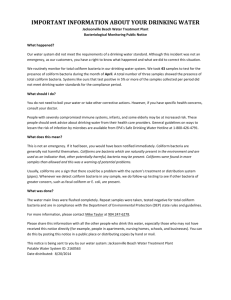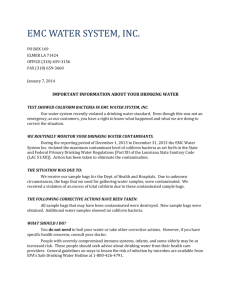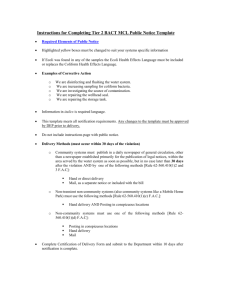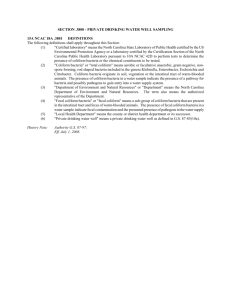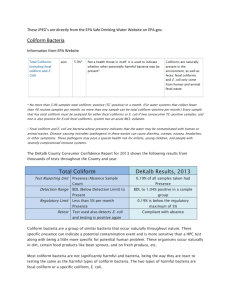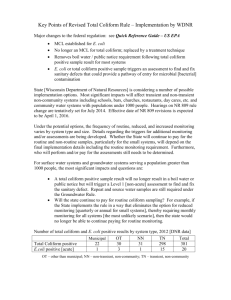0907026
advertisement
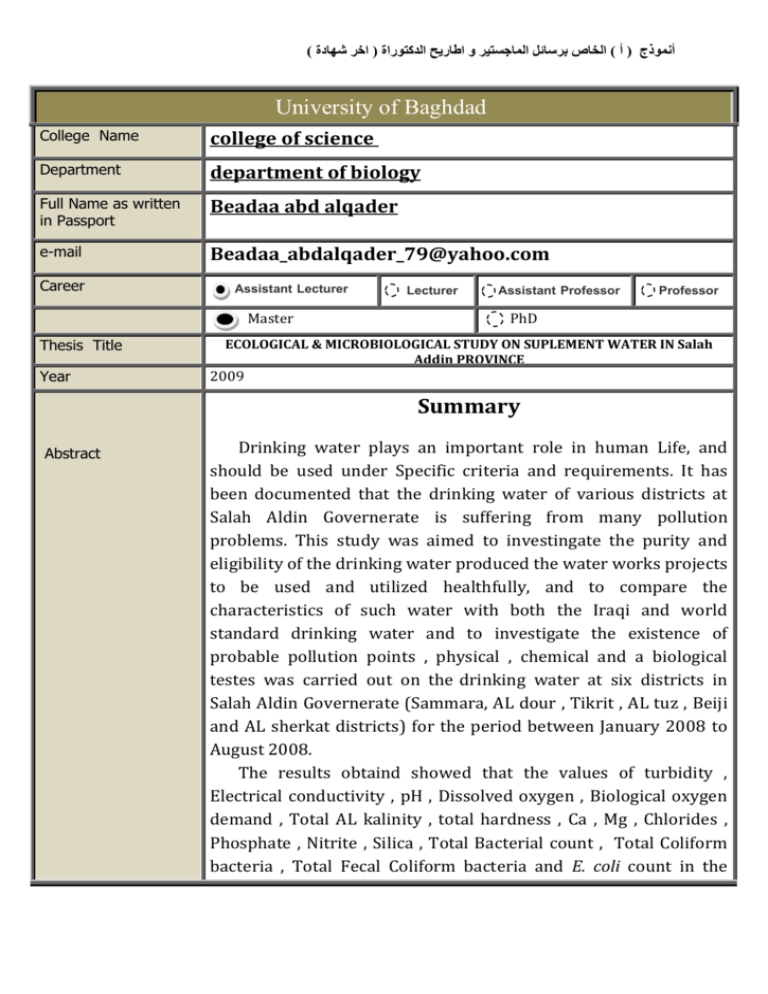
) أنموذج ( أ ) الخاص برسائل الماجستير و اطاريح الدكتوراة ( اخر شهادة University of Baghdad College Name college of science Department department of biology Full Name as written in Passport Beadaa abd alqader e-mail Beadaa_abdalqader_79@yahoo.com Career Assistant Lecturer Master Thesis Title Year Lecturer Assistant Professor Professor PhD ECOLOGICAL & MICROBIOLOGICAL STUDY ON SUPLEMENT WATER IN Salah Addin PROVINCE 2009 Summary Abstract Drinking water plays an important role in human Life, and should be used under Specific criteria and requirements. It has been documented that the drinking water of various districts at Salah Aldin Governerate is suffering from many pollution problems. This study was aimed to investingate the purity and eligibility of the drinking water produced the water works projects to be used and utilized healthfully, and to compare the characteristics of such water with both the Iraqi and world standard drinking water and to investigate the existence of probable pollution points , physical , chemical and a biological testes was carried out on the drinking water at six districts in Salah Aldin Governerate (Sammara, AL dour , Tikrit , AL tuz , Beiji and AL sherkat districts) for the period between January 2008 to August 2008. The results obtaind showed that the values of turbidity , Electrical conductivity , pH , Dissolved oxygen , Biological oxygen demand , Total AL kalinity , total hardness , Ca , Mg , Chlorides , Phosphate , Nitrite , Silica , Total Bacterial count , Total Coliform bacteria , Total Fecal Coliform bacteria and E. coli count in the ) أنموذج ( أ ) الخاص برسائل الماجستير و اطاريح الدكتوراة ( اخر شهادة drinking water at most waterworks station were found to higher at winter and lower at summer.It was recorded that the Water temperature values ranged between (7-31.5) , turbidity values (1.19-31.19)Nefthaline turbidty units , Electrical conductivity (322-560) micro semenze / cm . It was found that the drinking water at Salah Aldin Governerate districts studied was basophilic (pH =7.67-8.72) with a reasonable ventilation as the oxygen values recorded varied monthly at winter months (5.1-12.2)mg / L . The biological oxygen values were found to be higher at some stations (0.9-5.3) mg / L . The total alkalinity values of all stations were found to be between (90-190) mg / L. It was evident the total hardness was very high and ranged between (130-307.5) mg / L, where as calcium hardness ranged between (100-210) mg / L , Magnesium hardness (15-112.5) mg / L, and the chlorides values ranged between (17.7-46.1) mg / L. The highest nutrition's Nitrite values ranged between (0.596-2.624) microgram nitrogen atomnitrite /L, and the phosphate values ranged between (0.005-2.82) microgram phosphor atom- phosphate /L. Besides, the silicate values ranged between (93.33-3657) microgram silicon atomsilica /L. The highest bacterial count was recorded at the third station during February 2008 ( 260X10)cell /1 ml , where as the lowest value was found during August 2008 (Zero) cell /1 ml. Total Coliform and Fecal Coliform bacterial counts were (3-150) cell / 100 ml and (3-150) cell / 100 ml , respectively. The study proved that drinking water qualification at the different stations concided with that of the Iraqi and international drinking water characterization. The concided characterization of the recorded values included; Conductivity, pH, Dissolved oxygen, Biological oxygen demand, Total AL kalinity, total hardness, Chlorides, Magnesium, Phosphate, Nitrite, Silica. While the present results proved the difference of Turbidity, Calcium, Total Bacterial count, Total Coliform bacteria count, excretory Coliform bacteria and E. coli values with that of the Iraqi and international drinking ) أنموذج ( أ ) الخاص برسائل الماجستير و اطاريح الدكتوراة ( اخر شهادة water values. The present study also included isolation and identification of some pathogen bacteria as Pseudomonas aeruginosa and Staphylococcus aureus . For differentiation between groups of total Coliform bacteria and identification of some pathogen bacteria present, biochemical study as IMVIC and Api20 were used for this purpose. Isolation and identification of some pathogenic fungi like Aspergillus flavus and Aspergillus niger were also performed in the study.
